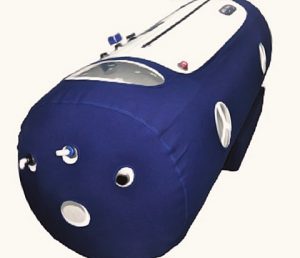 A structural problem to my toes that developed when I was a 23 year old flared and fluctuated through the years. In my early thirties, this became unbearable. I found out through visiting a specialist that I had a condition, in which my toes were subject to poor healing and constant breaks. The worst was yet to come, though. Even reading it now takes my breath away, because two of my toes on the left foot would need to be amputated. Suffice to say, it wasn’t a great time, but thankfully, relief came in the form of hyperbaric treatment. Melbourne won me over again with a place specialising in hyperbaric treatments that I could regularly visit just a few main roads away.
A structural problem to my toes that developed when I was a 23 year old flared and fluctuated through the years. In my early thirties, this became unbearable. I found out through visiting a specialist that I had a condition, in which my toes were subject to poor healing and constant breaks. The worst was yet to come, though. Even reading it now takes my breath away, because two of my toes on the left foot would need to be amputated. Suffice to say, it wasn’t a great time, but thankfully, relief came in the form of hyperbaric treatment. Melbourne won me over again with a place specialising in hyperbaric treatments that I could regularly visit just a few main roads away.
Thankfully, around the same time, I was referred by a friend who played football to a place that offered hyperbaric chamber sessions. He made sure I knew about about the benefits of oxygen therapies and why not trying one would be a mistake. He was right.
In the end, I wasn’t able to save my toes but I was able to deal with the amputation wound, which threatened to be very difficult to treat. Areas of the body far away from the heart are notoriously more resistant to healing, due to the fact that oxygen is firstly used in the central regions of the body, leaving legs and extremities to go with less. a long period of recovery behind. I was able to focus on intensive return to health though, and what made that easier than I expected was the introduction to leading Melbourne hyperbaric chamber oxygen therapies.
My first session in a chamber made me realise how much pain I’d been in. A level down from the pain I’d normally been in was the eye opener. I guess I had become become complacent with compensating pain, and my body showed the aftershocks of this, with tiny niggles opening up all over my body, which I guess were the small but numerous readjustments my body needed to make now that those pain-led movements no longer happened.
 Today I was on the tram and ran into an old pal from high school, Kasey. I haven’t seen her for yonks. We’d never been that close, but she seemed up for a chinwag, so I really went for it and told her all about my bung knee. She reciprocated by telling me about how she’d been struggling with chronic fatigue since her final year at uni, and had just recently come across a treatment that seemed to be alleviating it.
Today I was on the tram and ran into an old pal from high school, Kasey. I haven’t seen her for yonks. We’d never been that close, but she seemed up for a chinwag, so I really went for it and told her all about my bung knee. She reciprocated by telling me about how she’d been struggling with chronic fatigue since her final year at uni, and had just recently come across a treatment that seemed to be alleviating it.